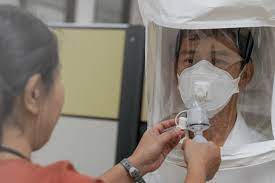Quick Tips for a Successful N95 Mask Fitting Test Every Time
The N95 mask fitting test is crucial to ensuring that the mask provides effective protection. For healthcare workers, lab personnel, and individuals in high-exposure environments, a proper fit can mean the difference between safety and risk. Here’s a quick guide with essential tips for achieving a successful N95 mask fitting test every time.
1. Choose the Right Size and Style of N95 Mask
N95 masks come in different shapes, sizes, and designs. Trying on various models can help you find one that best fits your face structure, as a secure fit is essential to keeping contaminants out. If possible, consult your safety officer or mask supplier for guidance on selecting the most suitable N95 mask.
2. Perform a Seal Check
After putting on the mask, always conduct a seal check before starting the fit test. Place your hands around the edges of the mask and exhale sharply. If you feel air escaping from the sides or around your nose, adjust the nosepiece or straps until there is no leakage. This step helps identify any potential gaps.
3. Position the Nosepiece Correctly
The metal nosepiece on an N95 mask is there to form a tight seal over your nose bridge. To improve the fit, gently press the nosepiece into shape with your fingertips, following the contour of your nose. This will ensure a closer fit and reduce the chance of gaps, particularly around the nose area.
4. Adjust the Straps for Comfort and Security
The straps on an N95 mask should be snug but not overly tight. Position the lower strap around your neck and the upper strap on the crown of your head. If the straps are loose or uncomfortable, consider adjusting them until they provide both comfort and a secure fit. Avoid crossing the straps, as this can weaken the mask’s effectiveness.
5. Maintain a Clean-Shaven Face
Facial hair can prevent an N95 mask from forming a proper seal, as hair creates small gaps between the mask and skin. If possible, maintain a clean-shaven face, especially around the mask-seal area, to ensure a reliable fit. For individuals required to wear N95 masks regularly, this may be an essential step.
6. Move Through Different Fit Test Exercises
During the fitting test, you’ll typically be asked to perform various movements (such as nodding, talking, and bending over) to check if the mask maintains its seal during daily activities. Moving through these exercises helps simulate real-world use, ensuring the mask will stay secure during work tasks.
7. Perform the Test in a Controlled Environment
Fit testing should take place in a controlled environment, free of drafts or contaminants that could interfere with the test results. Fit tests often involve aerosol solutions or agents to assess leaks, so an indoor, well-ventilated area is ideal for accurate testing.
8. Regularly Recheck the Fit
It’s important to periodically recheck the fit of your N95 mask, especially if you’ve made any adjustments or replaced the mask. Regular checks help identify wear, changes in mask shape, or any other factors that could impact the fit.
9. Get Re-Fit Tested Annually or After Major Changes
Annual fit testing is generally recommended, but a new test is necessary if you’ve experienced major weight fluctuations, facial surgery, or significant dental work. Changes in face shape or structure can affect how well the mask seals, so make sure to schedule re-testing if any of these occur.
Conclusion
Following these tips ensures that your N95 mask fitting test is successful every time. A secure fit can help protect you from airborne contaminants and improve safety in high-risk environments. With a few simple adjustments and regular checks, you’ll maximize the effectiveness of your N95 mask and enjoy peace of mind knowing you’re well-protected.
09 Jun 2000








